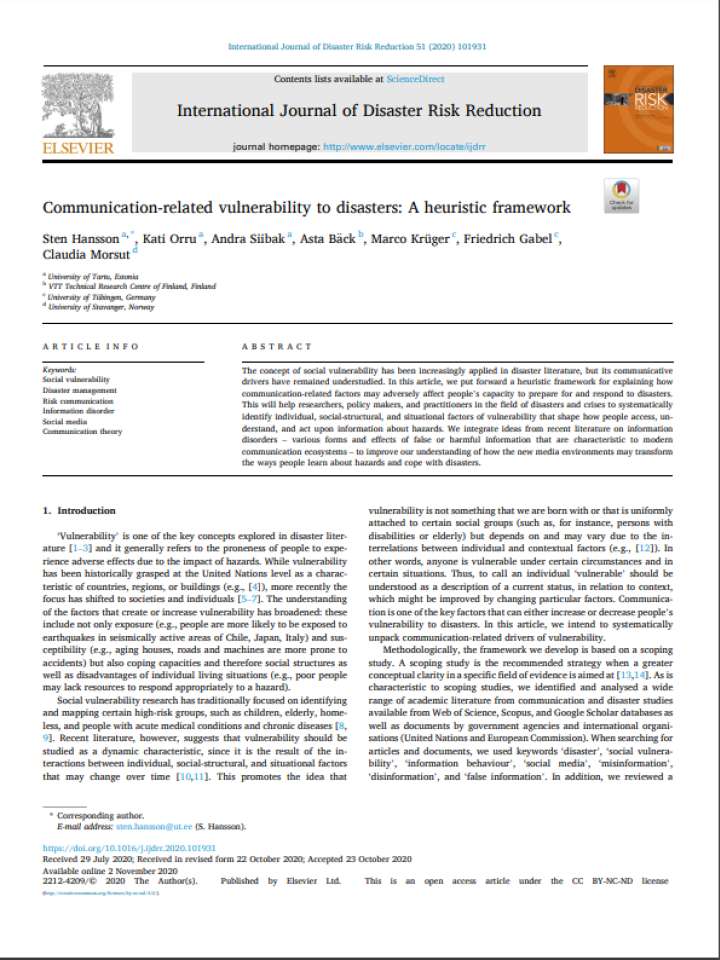Communication-related vulnerability to disasters: A heuristic framework
In this article, the authors put forward a heuristic framework for explaining how communication-related factors may adversely affect people's capacity to prepare for and respond to disasters. This will help researchers, policy makers, and practitioners in the field of disasters and crises to systematically identify individual, social-structural, and situational factors of vulnerability that shape how people access, understand, and act upon information about hazards.
Social vulnerability to disasters may often have a communicative component or driver. It is important for disaster researchers, policy makers, and emergency responders to systematically identify these vulnerabilities and devise concrete ways for reducing their causes or at least mitigating their impacts. In this article, we have put forward a new heuristic framework to support this endeavour.
According to the authors, communication-related vulnerability can be understood as being driven by (a combination of) factors that fall under three types:
- Individual factors arising from personal physical, mental, emotional or behavioural conditions and that could make it difficult or impossible for people to send, receive, understand, or react to information about hazards. These include cognitive, sensory, and mobility impairments (e.g., one cannot hear, see, read, walk), limited skills (e.g., a small child cannot read; a tourist may not understand the local language), and limited resources (e.g., one has no spare money to buy a communication device for sending or receiving disaster information).
- Social-structural factors arising from various historically, politically and culturally constructed forms of social inequality, and configurations of government policies that exacerbate (or fail to mitigate) these. People in some areas may suffer from poor communication infrastructure. Disaster information may be distributed by authorities via channels that certain groups cannot (afford to) access or do not usually use, or in a language that they cannot understand. Social support for some disadvantaged groups may be lacking and, due to social marginalisation, distrust may grow among them towards officials and news media as sources of warning messages and disaster information.
- Situational factors, or complications to disaster communication that emerge in the specific context of a particular disaster. Some of these complications may affect access (e.g., communication channels may be disrupted due to power outages caused by storms or wildfires) while others affect understanding (e.g., exposure to false or misleading information) or reactions (e.g., lack of previous experiences with a particular type of hazard).
Explore further
